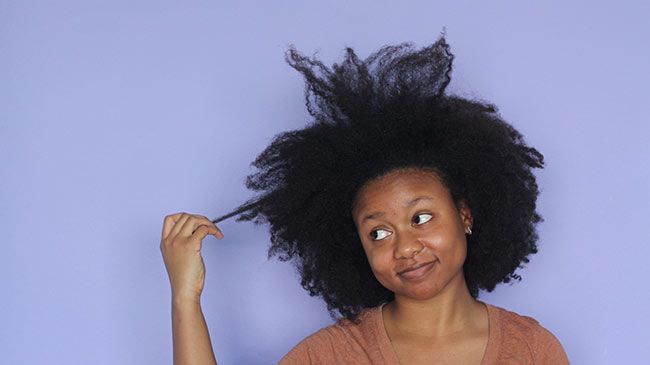Merriam Webster identifies nappy as “having tight bends or coils” but when I hear the term it is commonly used to mean dry and unmanageable and that is how I will use it in this article.
Before we condition our hair we must first treat the conditioning of our minds. Manageability is relative and people rate the manageability of their hair based on lifestyle and preferences. Like many women, if you were relaxed and straightened frequently it’s just as bad as being natural and straightening frequently so that’s a convenience that many need to forgo anyways but I digress.
My curl pattern is predominately 4a. For the past three years I have mostly worn stretched styles, with a flat-twist out being my favorite. When I was in undergrad, more times than not, if a woman asked me about natural hair they discredited their beauty by saying “my hair is too nappy for that” and being the challenger that I am, I would inquire more about this “unbearable” nappy hair. With any conversation, the root of so many women being nappy is a combination of an inferiority complex and lack of knowledge. For many newbies in the natural hair community, when they see a flat-twist out they genuinely think that is someone’s natural curl pattern. I was intentional about telling people that my hair was in a stretched state. I was not flattered by someone thinking I did not put any effort into my hair, and that is not to say that women with looser textures do not, but I wanted to empower them to know that their nappy hair is capable of more than they think. The worst way to start your hair journey is with a bad attitude. Some contributing factors to this attitude are aspiring to be Tracee Ellis Ross when you are a Naptural85. Yes, I intentionally said Naptural85 because she recently published a video showing her hair in a wet, shrunken state because new viewers who have not been following her since 2009 think that she has a 3b texture, which is furthest from the truth. With the right products and technique, your nappy hair can reach moisture perfection as well.
After talking to countless women about hair care, here are the top reasons I have discovered that your hair is nappy.
Products
Around three months after my big chop, my hair was becoming excessively dry. I did not understand what the issue was because I was using the same products. Sure enough, I headed to the blogs and droves of women started to discontinue the use of products with silicones and mineral oil. This was a huge game changer for me. Literally, every product that I owned went into the trashcan. After I shampooed my hair and applied SheaMoisture’s Raw Shea Butter Restorative Conditioner, I never looked back. Although Aussie Moist is a staple of many, my hair was suffocating from the buildup of silicone. Some people get it right with the first products they purchase, but it is hard to have a successful hair journey if you want to bypass the time it takes to learn about ingredients. Trying different products is only an investment if you are observing the common denominator in the ones you are throwing out.
Straightening
When you have been raised to blow dry and flat iron your relaxed hair after every wash, it is disheartening to hear that straightening your hair weekly and monthly is damaging. If you are convinced that you do not have heat damage and your hair has changed or does not curl, I challenge you to go six months to a year without any heat tools and to see what your roots look like. You have to put the flat iron down. So what do you do with the heat-damaged hair? Big chop or transition.
Weave
Weave does not make your hair nappy but many women use it to avoid the learning process of caring for their hair. I know someone who wore a sew-in faithfully for two year straight without wearing her hair out and when she removed the extensions, she panicked. Her hair was excessive dry and unmanageable. Why was it unmanageable? She did not know what to do with it. She was avoiding the learning process in an attempt to maximize her length retention. Did she retain? She did but her story is an anomaly. For many women, once the weave is removed, it is just a matter of days before their dehydrated curls break off. Don’t allow “protective styling” to evolve into neglect.
Technique
When someone tells me, “my hair is so pretty when it’s wet but when it dries it’s bushy” my first question is do you comb your hair? If you are dry combing your hair that is why your hair is nappy. You are combing your curls out. If you are not washing your hair, you do not have to comb your hair. I know that goes against everything your were taught but it is simply unnecessary. Constant combing or high manipulation only increases the potential for breakage.
So why is your hair nappy? It needs knowledge, moisture, and love. Everyone’s texture is different and you are not a 4z. You may just be a 4a who is confused or a 4c who has not accepted her hair texture. Please take advantage of the natural hair community on YouTube and fabulous blogs such as this one. No one likes growing pains but it’s essential for a happy, healthy hair journey.

